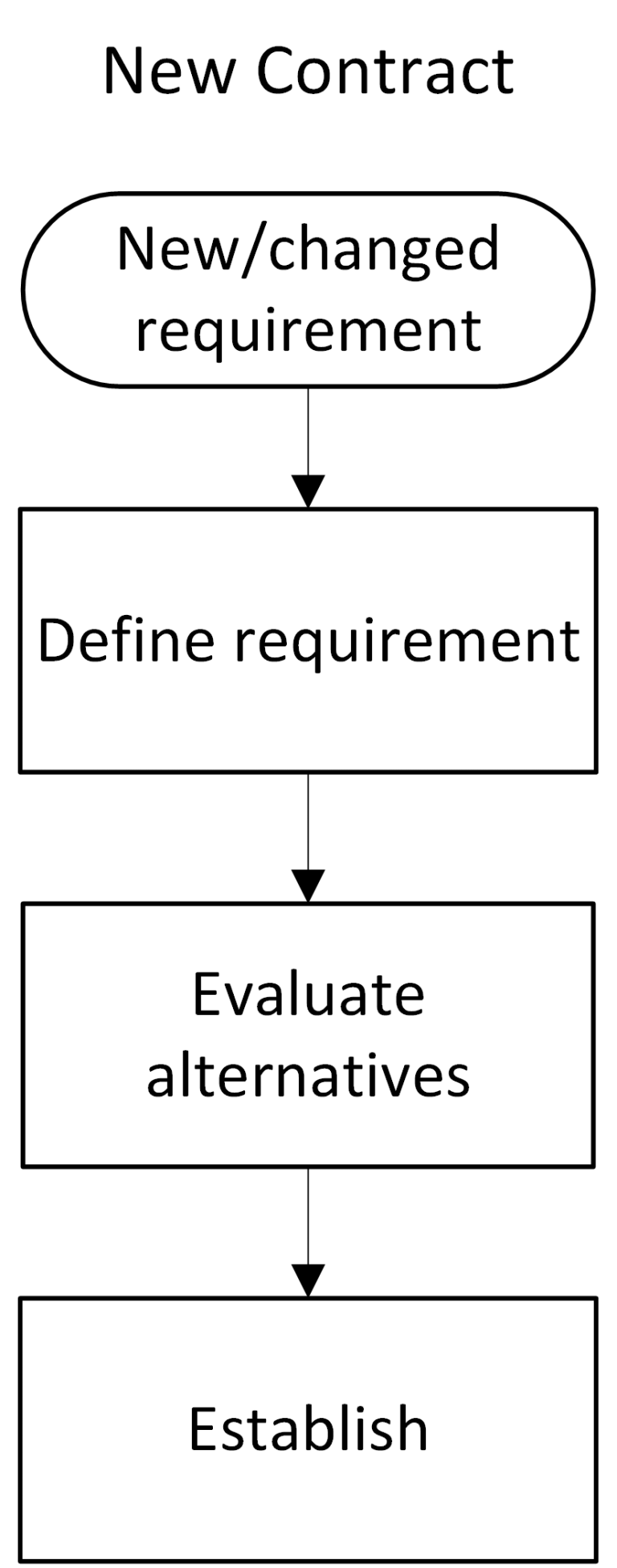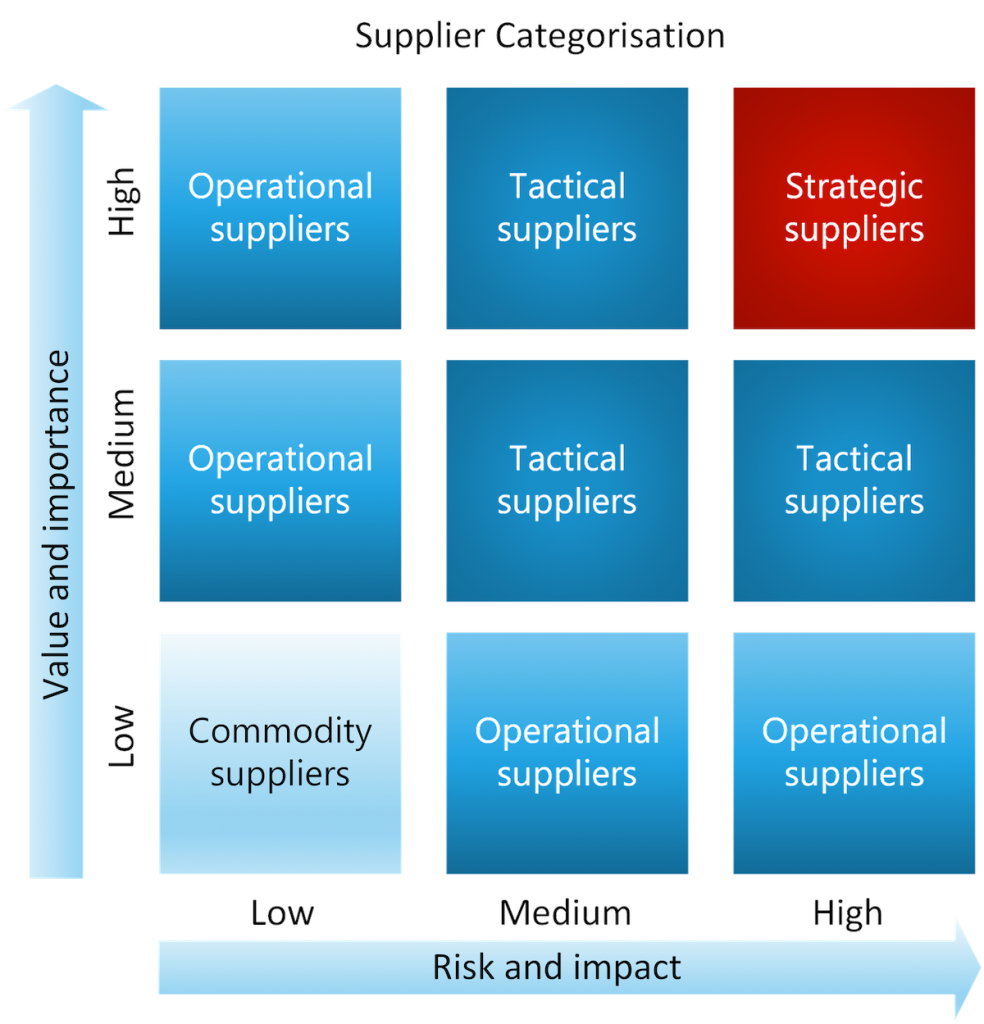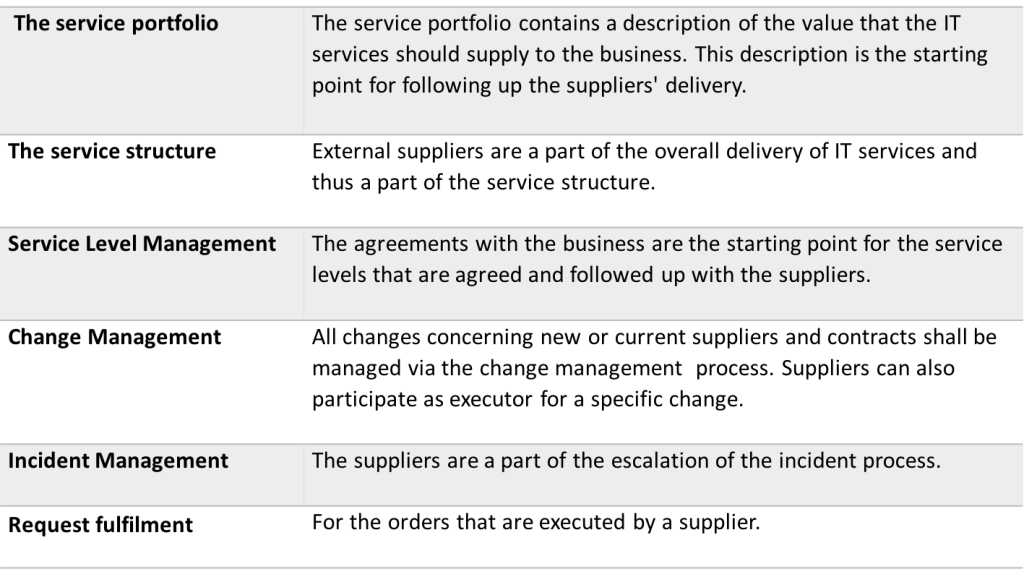Supplier Management is the process which defines, negotiates with, measures and evaluates the suppliers that are involved in delivering IT services.

Purpose
The purpose of Supplier Management is to create an integrated delivery of IT services for the business, and also to provide a channel for cooperation between the IT organization and its suppliers.
Activities to achieve the purpose of Supplier Management are:
- Negotiate and sign contracts with suppliers
- Administer contracts with suppliers
- Ensure that the value of the service is higher than the cost
- Ensure that contracts with suppliers accord with the services delivered to the business
- Manage relations with suppliers
- Create and administer a policy for suppliers
Scope
Supplier Management comprises all suppliers and contracts needed to ensure delivery of IT services to the business. The more the supplier delivers, the more resources the IT organization must allocate to manage the supplier. With outsourced environments, the supplier should also be involved in the strategic questions. For smaller suppliers, a purely operational collaboration is sufficient.
Supplier Management includes:
- Developing and establishing a policy
- Administering supplier and contract databases
- Categorizing suppliers including risk analysis
- Evaluating contracts and suppliers on an ongoing basis
- Drawing up, negotiating and signing contracts with suppliers
- Revising, renewing and terminating contracts
Value for the business
One of the most important objectives for Supplier Management is to ensure that the IT organization receives ”value for money” from the suppliers and that the contracts signed are in line with the agreements (SLA) concluded with the business.
Supplier database
To ensure that the information about our suppliers is clear and available for everybody who needs it, Supplier Management should administer a number of structured documents or a database which contains all essential information about suppliers and contracts, as well as detailed descriptions of the services and products that are purchased. The information constitutes the basis for activities such as:
- Categorization of suppliers
- Administration of suppliers and contracts
- Evaluation and establishment of new suppliers and contracts
- Measurement of suppliers and contracts
- Renewal and termination of contracts
- Incident- and problem solving
- Change Management
Activities
Supplier Management consists of two parts, signing new contracts and administering existing ones.
The following activities are performed in connection with new contracts:
Define requirements for new supplier or contract
- Identify business requirements
- Define suitable procurement method
- Establish selection criteria such as price, quality, proximity and capacity
- Ensure agreement with the supplier’s policy
- Produce procurement documentation
Evaluate alternatives
- Evaluate alternatives and assess the risks
- Select alternative
- Negotiate the contract including objectives, numerical values responsibility, termination and extension
- Sign contract
Establish supplier or contract
- Document the contract in the supplier’s database
- Establish the new service via the Change- and Release Management processes
- Establish relations with the new supplier

The following activities are performed in connection with administration of existing contracts:
Maintenance of documentation
- Ensure that changes take place via the Change Management process
- Categorization of suppliers
- Updating documentation
Measure and follow up suppliers and contracts
- Follow up the operational delivery
- Monitor, measure and report to stakeholders
Evaluate
- Evaluate current suppliers and contracts
- Check that the value of the delivery outweighs the cost
- If necessary, improve contracts with and procedures in relation to suppliers
Meetings with suppliers
- Maintain relationships with suppliers
- Negotiate, renew or terminate contracts
Update plan
- Plan for extension or termination of contracts
- Any changes to new suppliers or to internal groups are made via the Change Management process

Categorize suppliers
A simple way to structure suppliers is to perform a categorization exercise where all suppliers are assessed on the basis of two questions, using the scale low – medium – high.
Value and importance – How important are the services the supplier provides, are they business-critical services or standard solutions?
Risk and impact – How dependent is the IT organization on the supplier, are there others which can deliver the same services or is the supplier unique in the market?

Categories
Strategic – Basis for partnership. Persons from the management in both companies should meet in order to establish the relationship, and draw up a long-term plan. Alternatives to these suppliers should be sought, internally or externally, in order to reduce risk exposure and dependence.
Tactical – Relationships which involve a lot of resources and which demand good relations. Outsourcing of certain parts of the IT environment is often at this level.
Operational – Management of these suppliers mostly takes place at operational IT level.
Commodity – Suppliers of products and well packaged services that can be purchased by many different suppliers. No major need to build relationships.
Documentation
All documentation included in Supplier Management should be located in the supplier’s database. This includes all documentation about suppliers and contracts and also information from the supplier about the services purchased. The documentation is included in the overall knowledge database that is described in the section about Knowledge Management.
The following documentation should be available within the framework of Supplier Management:
Complete record of existing suppliers containing:
- Contact details
- Contracts
- Services and levels
- Common procedures
- Categorization
- Support routes
- Management of incidents
- Link to the service structure
Relationships with other processes and functions
Supplier Management has links to many other processes. The most common are listed here:

Trigger
Supplier Management is triggered through one of the following:
- New or changed
- Guidelines within the company that affect Supplier Management
- IT policies or IT strategies
- Requirements from the business
- Services
- Requirements within existing contracts
- Periodic evaluation of
- Strategies
- Supplier policy
- Change request (RFC) from other parts of the IT organization that concerns suppliers
- Requirement for new contract or renewal of contract
- Result of categorization of suppliers
Input
The following inputs are needed for Supplier Management:
- Supplier and contract strategies
- Plans for Supplier Management
- Current contracts
- Reports from measurements and evaluations of suppliers
- Financial information
- Documentation concerning services delivered to the business
Output
The following outputs are generated by Supplier Management:
- Updated supplier documentation
- Supplier policy
- Reports concerning the supplier’s performance
- Notes from supplier meetings
- Categorization of suppliers
Measurement
Measurement of Supplier Management can be performed as follows:
- Percentage of suppliers which meet the requirements in the contract
- Number of meetings held with suppliers
- The number of objectives in the contracts that are not in line with agreements with the business (SLA)
- The number of incidents caused by suppliers
- The number of missed service levels caused by suppliers
Challenges
The following elements need specific attention when implementing Supplier Management:
- Constantly changing requirements from the business
- Inferior existing contracts
- Legal requirements
- Limited experience of acting as purchaser
- Contracts with long commitment period
- Poor communication between the parties

